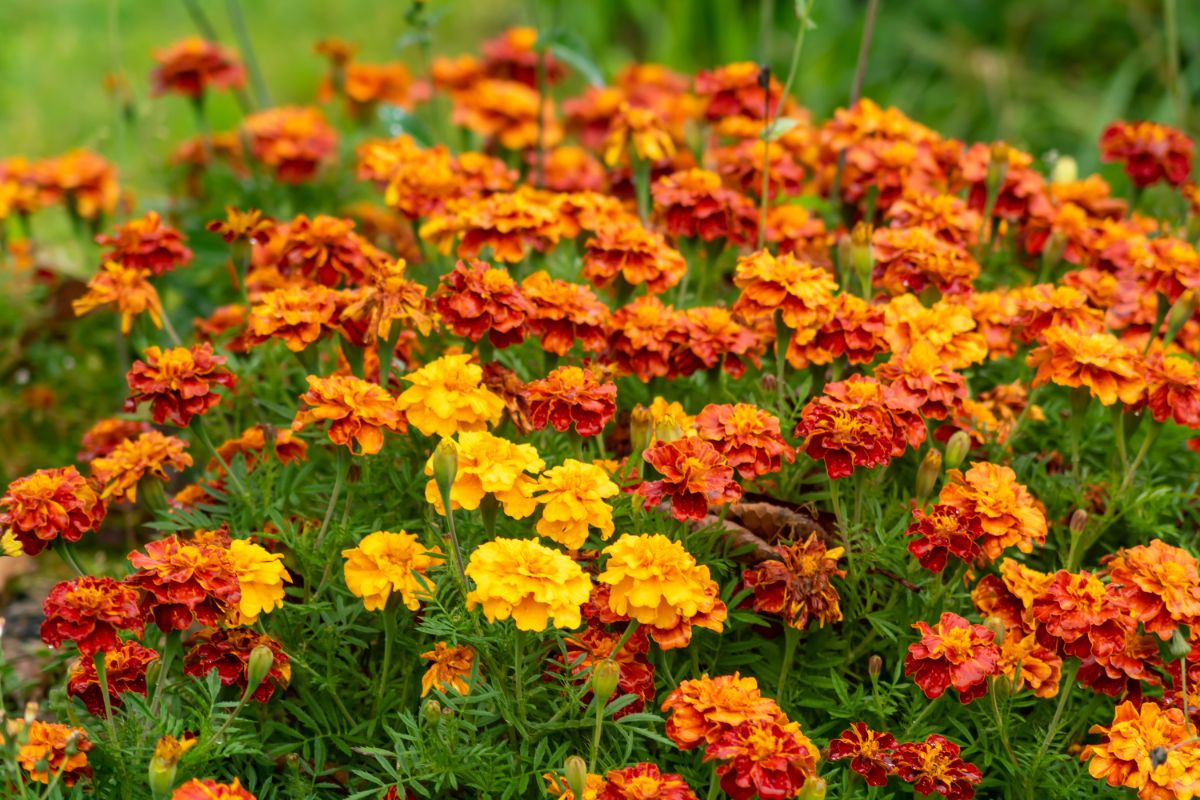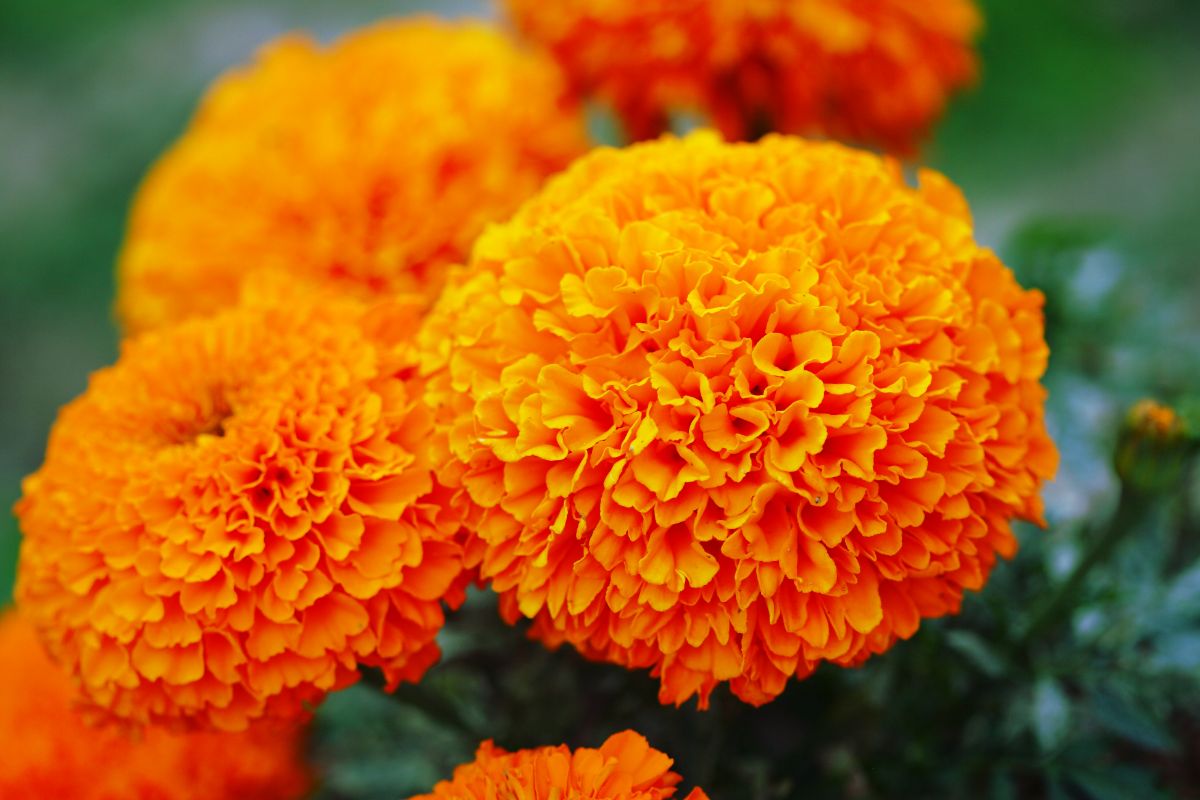When it comes to growing any new plant, it can be tricky for budding gardeners to know which flowers will go the distance, and which ones are destined for a shorter lifespan combined with more limited growing seasons.

This is why research should be the first step for any new gardener, ensuring that they know what their plants need, and when they can be expected to hit their stride in terms of growth and life expectancy.
One such example of a tricky plant is the marigold – a common and much loved plant, but one that can prove tricky for new growers. But what are marigolds, and in what ways do they grow?
Are Marigolds Perennials?
On the most part, most species of marigolds are considered perennial plants – and this means that they will continue to return and grow year after year.
However, depending on the species of marigold that you plant, it could actually be an annual plant, and this means there are different things you need to consider.
Perennial Vs Annual: The Difference
These terms in particular can be tricky for new gardeners to wrap their heads around, but in actuality, the terms are pretty simple once you break them down.
What Are Perennial Plants?
As we touched on in the previous section, the term ‘perennial’ essentially means ‘perpetual’ – referring to the way that perennial plants have the capacity to return each year and grow anew once their season approaches.
This is why perennials are so popular amongst new and experienced gardeners alike – as it not only means you are getting more bang for your buck, but that you can have established, easy to maintain plants that are almost guaranteed to return with each new year.
What Are Annual Plants?
However, the term ‘annual’ can be misleading, and it is easy to see why many people get confused between annual and perennial plants.
Despite having the word ‘annual’ in their title, such plants do not return each year, and in fact only generally flower and live for one year – after which they will need to be removed and replanted with a new plant.
While many of these annual plants are perfectly attractive and beautiful in their own right, and as such remain popular amongst growers, it does mean a certain level of work and care on the part of the gardener.
How To Tell Whether Marigolds Are Perennial?
When people think of marigolds, the most common plants that come to mind are French and African marigolds – both of which are considered to be annual plants.
Alternatively, Mexican marigolds are considered perennials, which means they will grow back every spring/summer and flower once more.
One of the most common ways to determine which variety of marigold you have is to either check the seeds, read the literature that came with the plant when you purchased it – or indeed observe the plant and see what happens after a year has elapsed.
The latter in particular can be useful if you have inherited a garden or some plants from another gardener, or you are not sure as to the origin of the plant.
Another good way to tell if you have a perennial marigold is to observe how it grows, and to examine the area it grows within.
Perennial marigolds (like the Mexican variety) are considered some of the most tenacious growers in the plant world, and they can thrive in clay and soil that would be considered difficult for most other plants to grow in.
Even the least fertile soil can prove to be the perfect growing location for perennial marigolds, so if you notice them thriving where other plants have failed, then this could be a good indication as to their origin.
Are Perennial Marigolds Low Maintenance?
One of the major perks about perennial plants in general is that they are pretty low maintenance when compared to their annual counterparts, and as mentioned above, they can often thrive in some of the most inhospitable locations – and under the least attractive soil conditions.
This not only makes them a joy for gardeners, but a good source of color and life for any garden to have – especially when it comes to ensuring new color and life with each passing year.
Marigolds: The Facts
Now that we have discussed a little about marigolds, and whether or not they are perennials, let’s take a deeper look at this popular plant – examining when they grow, how they grow, and why they have remained so well loved throughout the world.
What Does ‘Marigold’ Mean?
The term ‘marigold’ actually comes from the Old English word for ‘Golden Flower’, and they were a popular plant in the British Isles since their introduction by the Spanish after their exploration in the Americas.

This refers to their signature color, which is a rich yellow/orange, and which has come to be synonymous with the plant.
This marked the beginning of the love affair with the plant, which remains a common sight in gardens and exhibitions to this day.
When Do Perennial Marigolds Bloom?
Generally speaking, when they are set from seeds or young plants, they are usually done so in the springtime – when the soil is renewed and at its peak.
After this point, and once they are at sufficient maturity, they generally bloom at the end of spring/beginning of early summer, thriving throughout the warmer months, and well through the fall.
Once the frost comes, this is when the marigolds will generally stop blooming and fall back, returning again once the warmer weather comes.
How To Encourage Healthy Marigolds?
To ensure your marigolds continue to thrive and survive with each passing year, there are a few things you can do to help them along.
Firstly, it is important to deadhead old blooms. This means getting rid of the old, dried up blooms from the previous year, to allow the plant to focus its attention on the coming year’s bloom.
Secondly, it is important to fertilize marigolds to keep them nutrient rich and strong throughout the changing seasons. This means regular feeding sessions, and plenty of nutrients throughout the year.
Thirdly, if your marigolds have become tall, then you need to ensure they have sufficient support. This can be done by using supportive sticks to hold them straight.
Lastly, you need to ensure they are getting the right amount of water. Generally speaking, they need around an inch of water per week – and ensuring this will keep the roots healthy and strong.
Final Thoughts
And there we have it, everything you need to know about marigolds, and whether or not they are considered to be perennials.
It’s true that, when it comes to maintaining and growing new flowers, it can be tricky to ensure everything comes together properly.
This can be true with perennial flowers, which by their nature have shorter lifespans, and more limited growing times.
Luckily though, there are numerous resources online to ensure that you are up to date and informed, ensuring your garden looks great all year round.
- Interesting Flowers That Start With A - July 21, 2023
- Interesting Flowers Beginning With H - July 21, 2023
- 14 Fascinating Flowers That Begin With C - July 20, 2023
